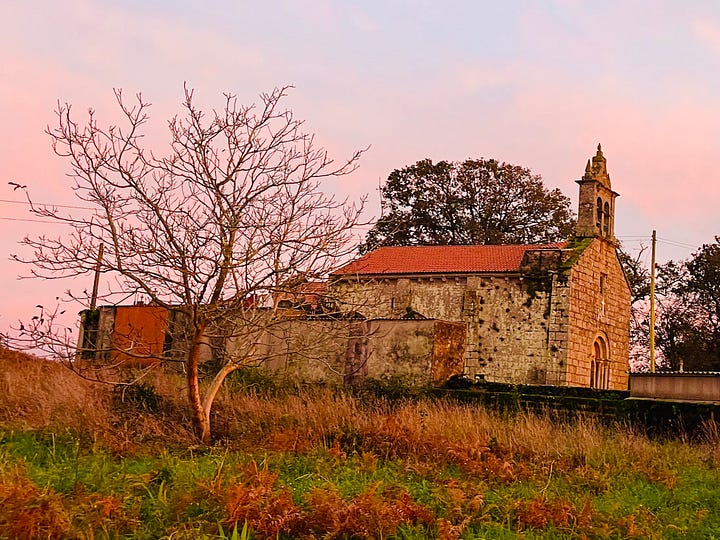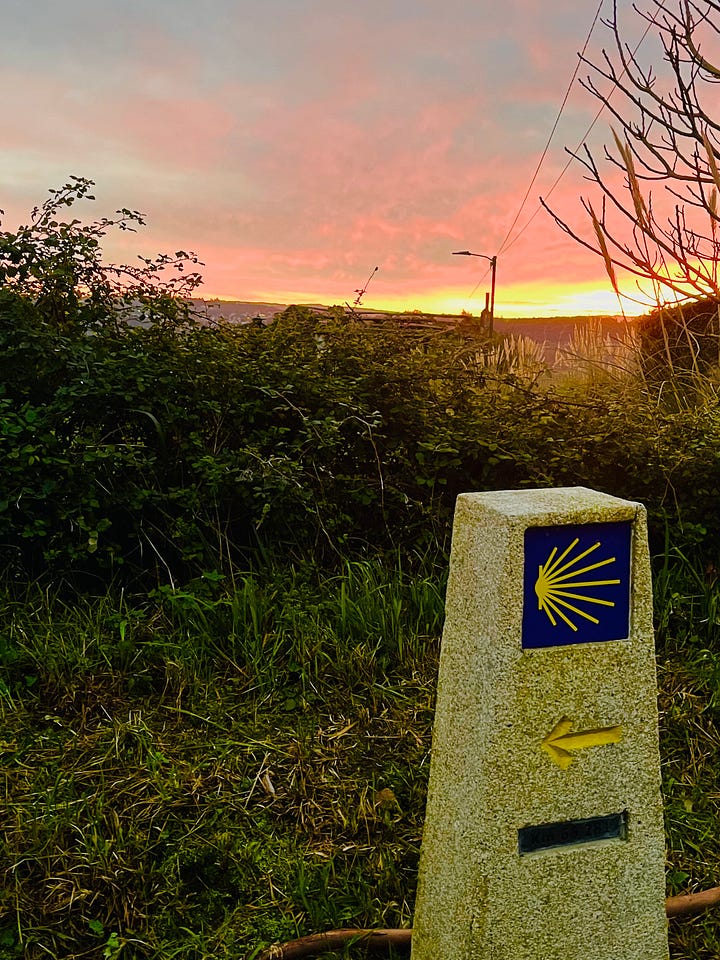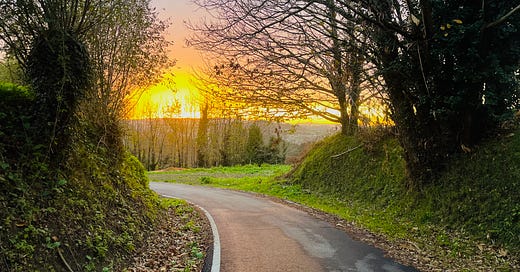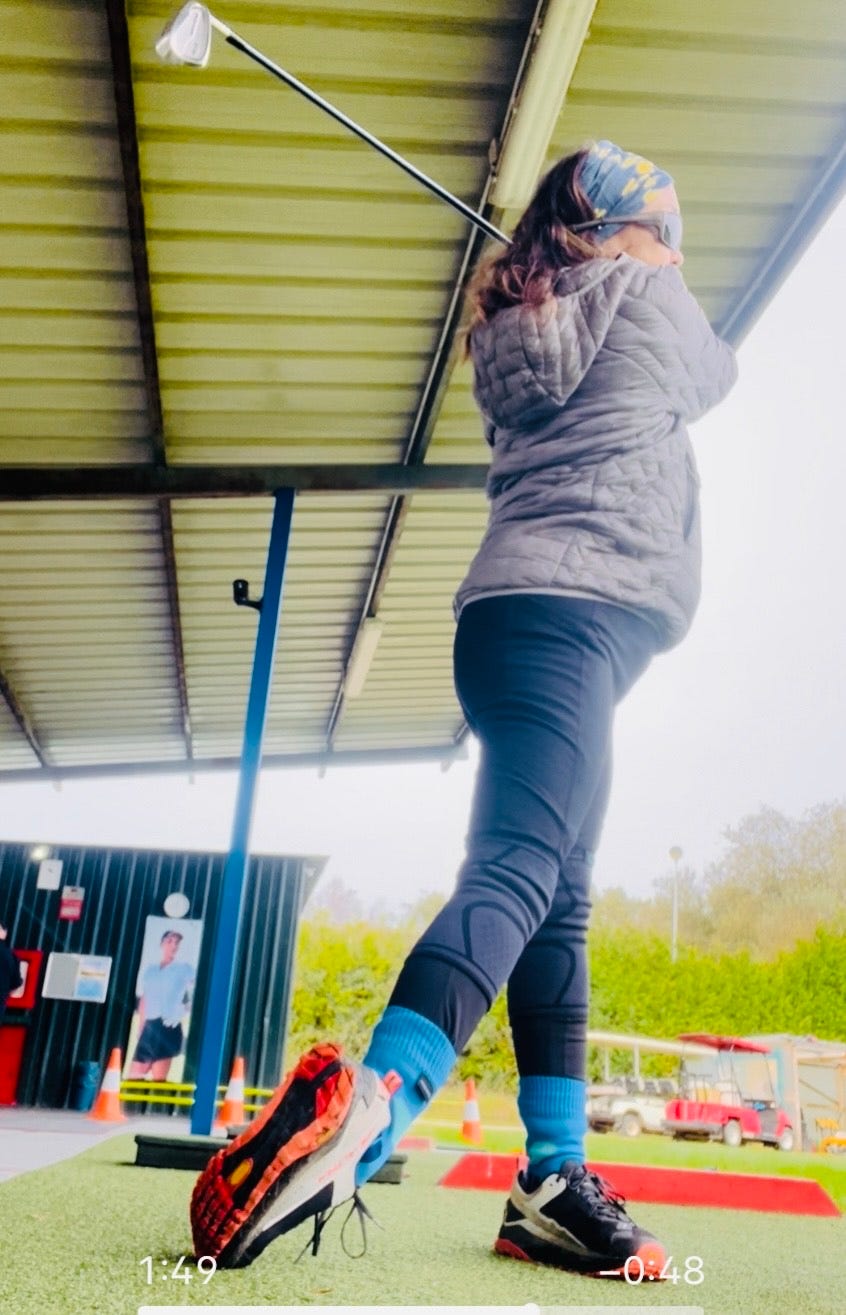The English Way (Camino Inglés) for Beginners
The least popular trail on the Camino de Santiago scores high for authenticity. A five-minute read.
After I completed the Camino de Santiago via the Camino Francés (French Way), I was so done with it after 37 days of walking. I wondered why some people came back to walk it again. I said I wouldn’t be one of those people.
Well, a year and a half later, here I was, walking the Camino de Santiago again. This time, I had a specific intention for walking: gratitude for the positive changes I’ve experienced after I walked the Camino the first time.
If receiving a compostela (certificate of completion) for your pilgrimage is one of your goals, then you must walk at least 100 kilometers (about 63 miles) to Santiago de Compostela, and have at least two stamps on your credencial (pilgrim passport) for each day of your walk .
Walking 118.4 kilometers (about 74 miles) from Ferrol to Santiago de Compostela via the Camino Inglés (English Way) fulfills the minimum requirement. On the Camino Francés, many start in the town of Sarria. On the Camino Portugués (Portuguese Way), starting in Tui is a popular option.
Why I chose the least popular trail
On my second Camino, I was more of a typical pilgrim and could only do two weeks. While I am not a fan of visiting Europe during winter, December was the only option I had. I chose the Camino Inglés, which enjoys a daily average temperature of about 57 degrees F in the winter. Apparently, only four percent of pilgrims walk this trail.
My first impressions of the Camino Inglés in December:
As to rain gear, I prefer ponchos over rain jackets and rain pants. They are easier to put on and take off, provide two-in-one coverage for both your body and backpack (backpack rain cover not needed), allow more air circulation, and don’t cost a lot.
Winter Camino on the English Way: Why or Why Not?
Here are some of the pros and cons I personally experienced walking the Camino Inglés during low season.
Pros:
-Trail is all yours. Most days, I saw no one on trail. (If you’re looking to be more sociable, this might not be a positive for you. Walk during high season).
-Lower priced airfare.
-No competition for lodging. I was the only one in the first and only albergue (pilgrim hostel) I stayed in. There were many hotel rooms available.
-The festive, pre-Christmas atmosphere. Not on trail, but in town. It’s a pleasant contrast, after emerging from a forest, to be welcomed by lights and holiday treats.
-The overall moody vibe is conducive to reflection. Why I love hiking, in general. It’s just you and nature. The gray clouds, fog, mist and rain enhances hermit mode (versus tourist mode).
-Magical forests dressed in velvety green.
Cons:
-Lots of establishments (albergues, restaurants, shops) along the trail were closed due to low season. Feels like a limited experience.
-It rains more than usual. Get ready for mud and mini-floods.
-Luggage/Backpack transfer was three times more expensive during the low season. The usual transer services were shut down for the season. Only taxis will take your backpack. Arrange this through your hospitalero or front desk.
-Much shorter days. You may end up starting later and hiking in the dark. Watch essential gear in action:
Another good gear for a winter camino could be a reflective vest for night hiking on freeways.
My thoughts on the Camino Inglés
If the Camino Inglés could talk, here’s what I imagine it would say: “This is me. Take it or leave it. I’m not here to entertain you. I don’t do gimmicks. But if you want to just chill and be low key in nature, you’re welcome to hang out.”
The Camino Inglés, while short, is not easy. It’s full of ups and downs. The elevation gains are not drastic, but if you are not comfortable with hills, choose a flatter trail.
The trails, while not the easiest, were also not very hard. They felt unspoiled and perfect for a hiker and nature lover who’s not looking for trendy cafés in the woods.
I understand why the Camino Inglés doesn’t win popularity contests. There are some stretches on the Camino Francés that definitely cater to tourists. That’s okay, but somehow the Inglés has an authenticity and non-touristy vibe that appeals to me. I felt like I was truly immersed in Galician culture, and was on a classic hiking trip, while on the English Way.


This last bit is, for me, the most entertaining thing about the Camino Inglés. There’s on segment that runs through the 11th hole of an actual golf course, Golf Miño.
I experienced crime on the Camino de Santiago
Crime is obviously not exclusive to this particular trail, or to the Camino de Santiago. But I have a theory: because I was on Camino, I was more trusting and less vigilant. The Camino is still the real world. Here’s my cautionary tale.
Arriving in Santiago
It took me six days to walk the entire length of the Camino Inglés from Ferrol. What’s it like to arrive at Santiago de Compostela? There is appropriate fanfare.
I don’t know why arriving in Santiago de Compostela, even for the second time, though exciting, still felt anticlimactic, much like the first time. Maybe because I already completed an epic 37-day hike, and the 6-day one felt a little too short?
Or it’s as if success, while already great, somehow leaves you wanting more. (Heavy-handed metaphor for life, if you didn’t catch that ;) )
So, I answered the call. My energy level told me I could do more.
After reaching Santiago de Compostela, I continued walking another 50 miles to the Atlantic Coast, to recreate how the ancient pilgrims from the Middle Ages ended their long walk.
Next week, a three-day walk to the end of the world, on the Coast of Death, via the Camino de Muxia.
I offer a free consultation for beginners to the Camino de Santiago. Whether you’re still thinking of possibly walking your first Camino, or are already committed to doing it but need to know how to get started, e-mail me at contact@beginnersmind.life for your free consultation. Or maybe you’re thinking of being a solo traveler? E-mail me your questions!








